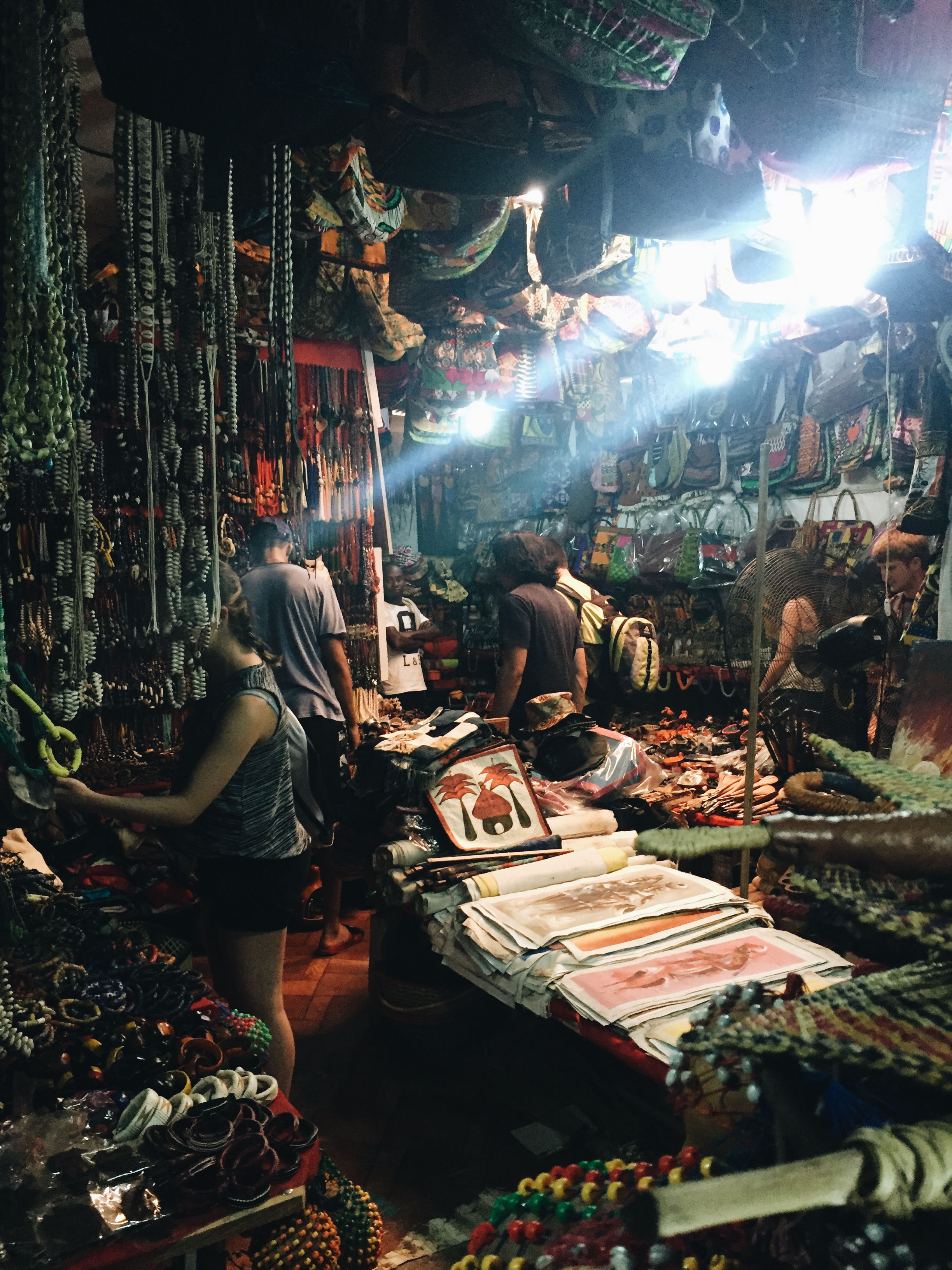A few things to know about a bus tour of Accra, Ghana:
This city is huge. I quickly realized that there was no way we’d be able to get a sense of the whole place in one day. It sprawls into neighborhood after neighborhood, each with a slightly different “feel.”
This isn’t your average bus tour. Cars drive on the right side of the road here, but the traffic laws are like nothing I’ve ever seen…which is to say, there aren’t any. Drivers honk in what seems like a secret code to pass, swerve into oncoming traffic going 50 mph, and squeeze past parked vehicles on narrow roads, a seemingly impossible feat.
(Don’t tell my mother any of this.)

For almost two hours, we stared out the window and listened to Doc’s descriptions of the sights. I noted the relics of British colonialism on every corner, from subtle architecture to the English language itself. Unfinished buildings and skyscrapers litter the skyline and sidewalks, as well — we learned that this is a result of exceptionally high interest rates on loans. People scrounge up enough money to buy land and start construction, but often cannot finish.
Soon, we passed through the Old Fadama neighborhood, otherwise known as “Sodom and Gomorrah.” The area is essentially a ghetto, riddled with E-waste and gut-wrenching poverty. Young girls travel from the North to this part of Accra and live in tents behind the ragged, yet bustling market.

We moved slowly through the packed street, squeezing past pedestrians, stacks of tires and market stands. One man hit the side of our bus, and another jumped onto the back. People eyed us warily and I began to feel uncomfortable.
Looking out over a polluted canal, I wondered: what am I doing here? I felt almost voyeuristic, observing this world from a padded bus seat, surrounded by other Americans. It was hard to think about how much of the E-waste that plagues this area comes from the United States. It was hard to imagine how these people lived, even as I stared at their lives through a thin pane of glass.
Part of me wishes I could see the whole world this way: safely in an air-conditioned vehicle, my nose pressed to the window. I love to observe, and this way I cannot intrude, offend or embarrass. I simply absorb what I see, and toss it around with my thoughts.
I’ve been thinking, though, that maybe that’s not always the best way to learn about the world. Sodom and Gomorrah forced me to think about the things you can’t understand through observation. As terrified as I am to start internships next Monday, I’m glad that that’s the way I’m spending my weeks here: not just watching, but doing.

